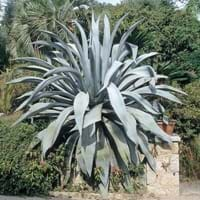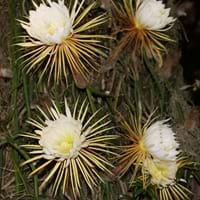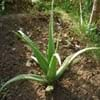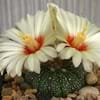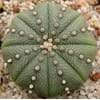Life Span
Perennial
Perennial
Type
Ornamental Plants
Cactus, Flowering Plants
Origin
Mexico
South America, Argentina, Brazil
Types
Not Available
Not available
Number of Varieties
Not Available
Habitat
Low annual rainfall regions, Semi desert
Dry Forest, limestone outcrops, Subtropical climates
USDA Hardiness Zone
10-12
10-14
Sunset Zone
Not Available
H2, 13, 16, 17, 21, 22, 23, 24
Habit
Rosette/Stemless
Upright/Erect
Flower Color
Yellow
White, Light Green
Flower Color Modifier
Not Available
Bicolor
Fruit Color
Non Fruiting Plant
Orange, Pink, White, Yellow
Leaf Color in Spring
Blue Green
Not Available
Leaf Color in Summer
Blue Green
Not Available
Leaf Color in Fall
Blue Green
Not Available
Leaf Color in Winter
Blue Green
Not Available
Leaf Shape
Sword-like
Not Available
Plant Season
Spring, Summer, Fall, Winter
Spring, Summer, Fall, Winter
Sunlight
Full Sun
Full Sun
Type of Soil
Loam, Sand
Loam, Sand
The pH of Soil
Neutral, Alkaline
Acidic, Neutral, Alkaline
Soil Drainage
Well drained
Well drained
Bloom Time
Indeterminate
Late Spring, Early Summer
Tolerances
Drought
Drought, Salt
Where to Plant?
Container, Ground
Container, Ground
How to Plant?
Cuttings, Divison
Cuttings
Plant Maintenance
Medium
Medium
Watering Requirements
Needs small amount of water
Average Water Needs, Distilled Water, Needs good drainage
In Summer
Lots of watering
Lots of watering
In Spring
Moderate
Moderate
In Winter
Average Water
Average Water
Soil pH
Neutral, Alkaline
Acidic, Neutral, Alkaline
Soil Type
Loam, Sand
Loam, Sand
Soil Drainage Capacity
Well drained
Well drained
Sun Exposure
Full Sun
Full Sun
Pruning
Remove damaged leaves, Remove dead branches, Remove dead leaves
Remove damaged leaves, Remove dead branches, Remove dead leaves
Fertilizers
All-Purpose Liquid Fertilizer
All-Purpose Liquid Fertilizer
Pests and Diseases
Black spots, Brown Spots, Rots, Snout weevils
Bacterial Stem Rot, Mealy bugs, Red spider mite, Scale
Plant Tolerance
Drought
Drought
Flower Petal Number
Not Available
Semi-Double
Foliage Texture
Bold
Bold
Foliage Sheen
Matte
Not Available
Attracts
Not Available
Birds, Spider Mites
Allergy
Antibacterial, Anti-inflammatory
Avoid during Pregnancy, hallucinations
Aesthetic Uses
Wild gardens
Showy Purposes
Beauty Benefits
Not Available
Not Available
Edible Uses
Sometimes
Yes
Environmental Uses
Air purification
Air purification
Medicinal Uses
Burns, Cuts, Diarrhea, Digestion problems, Dysentry, Skin irritation
Antidiabetic, Rheumatism, Soothing and relieving pain
Part of Plant Used
Leaves, Root
Flowers, Leaves
Other Uses
Used for making soaps
Traditional medicine, Used for its medicinal properties, Used in herbal medicines
Used As Indoor Plant
No
Yes
Used As Outdoor Plant
Yes
Yes
Garden Design
Container, Feature Plant, Mixed Border, Rock Garden, Wall, Tropical, Wildflower
Container, Edible, Hedges, Houseplant, Rock Garden, Wall, Tropical
Botanical Name
AGAVE gypsophila
Selenicereus grandiflorus
Common Name
American aloe, Century Plant, Maguey
Queen of the night, large-flowered cactus, sweet-scented cactus, vanilla cactus
In Hindi
सदी संयंत्र
रात की रानी
In German
Jahrhundert-Anlage
Königin der Nacht
In French
Century Plant
Reine de la nuit
In Spanish
Planta de siglo
Reina de la noche
In Greek
αιώνα φυτών
Βασίλισσα της νύχτας
In Portuguese
Century Plant
Rainha da noite
In Polish
Century Plant
Królowa nocy
In Latin
Century Plant
Domina noctis
Phylum
Magnoliophyta
Magnoliophyta
Class
Liliopsida
Magnoliopsida
Order
Asparagales
Caryophyllales
Family
Agavaceae
Cactaceae
Clade
Angiosperms, Monocots
Angiosperms, Core eudicots, Eudicots
Tribe
Not Available
Hylocereeae
Subfamily
Agavoideae
Cactoideae
Season and Care of Century Plant and Queen of the Night
Season and care of Century Plant and Queen of the Night is important to know. While considering everything about Century Plant and Queen of the Night Care, growing season is an essential factor. Century Plant season is Spring, Summer, Fall and Winter and Queen of the Night season is Spring, Summer, Fall and Winter. The type of soil for Century Plant is Loam, Sand and for Queen of the Night is Loam, Sand while the PH of soil for Century Plant is Neutral, Alkaline and for Queen of the Night is Acidic, Neutral, Alkaline.
Century Plant and Queen of the Night Physical Information
Century Plant and Queen of the Night physical information is very important for comparison. Century Plant height is 60.00 cm and width 60.00 cm whereas Queen of the Night height is 300.00 cm and width 90.00 cm. The color specification of Century Plant and Queen of the Night are as follows:
Century Plant flower color: Yellow
Century Plant leaf color: Blue Green
Queen of the Night flower color: White and Light Green
- Queen of the Night leaf color: Not Available
Care of Century Plant and Queen of the Night
Care of Century Plant and Queen of the Night include pruning, fertilizers, watering etc. Century Plant pruning is done Remove damaged leaves, Remove dead branches and Remove dead leaves and Queen of the Night pruning is done Remove damaged leaves, Remove dead branches and Remove dead leaves. In summer Century Plant needs Lots of watering and in winter, it needs Average Water. Whereas, in summer Queen of the Night needs Lots of watering and in winter, it needs Average Water.
